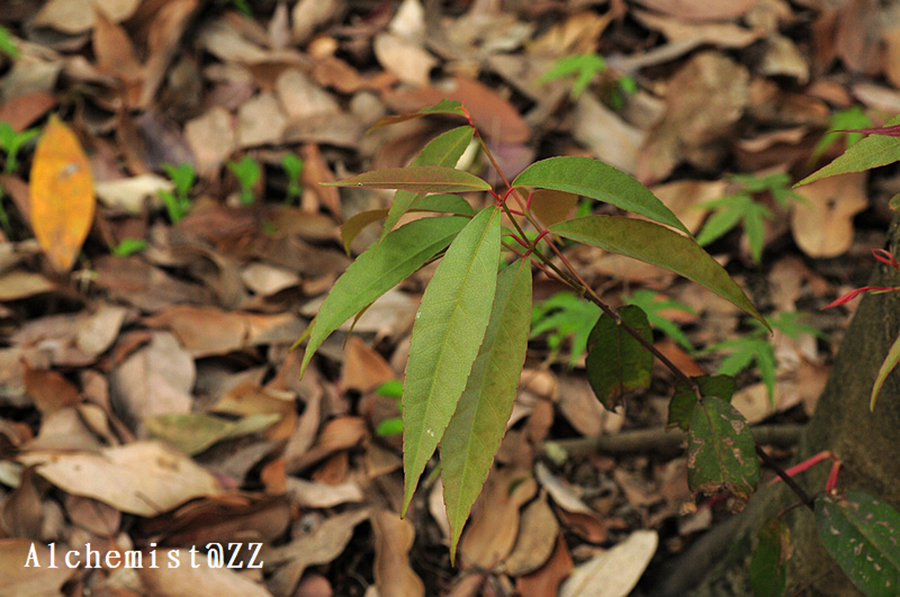- Scientific Name: Acer laevigatum Wallich
- Ref: Pl. Asiat. Rar. 2: 3. 1830.
- Chinese Common Name: 光叶槭
- Family: Sapindaceae
- Subfamily: Hippocastanoideae
- Genus: Acer
- Distribution: Forests; 1000-2000 m. Guangdong, Guangxi, Guizhou, W Hubei, Hunan, N Shaanxi, Sichuan, S Xizang, Yunnan [Bhutan, N India, Myanmar, Nepal, Vietnam].
Trees 10-15 m tall, andromonoecious. Branchlets slender, glabrous or pubescent. Leaves persistent; petiole 1-1.8 cm, glabrous or pubescent, purple-green; leaf blade light green on both surfaces or abaxially greenish, lanceolate to oblong or ovate- or elliptic-oblong, 7-15 × 2.5-5 cm, leathery or papery, abaxially with tufts of hairs at vein axils when young, then glabrous, adaxially glabrous, 3-veined at base, reticulate, veins slightly raised, lateral veins 7-12 pairs, base cuneate, broadly cuneate, or rounded, undivided, margin usually entire or remotely serrate when young, apex acuminate or shortly acuminate, acumen to 1.5 cm. Inflorescence terminal on leafy branchlets, corymbose-paniculate, pubescent or glabrous. Pedicel 6-8 cm, slender, glabrous. Sepals 5, ovate-oblong. Petals 5, white, obovate, longer than sepals. Stamens 8, glabrous. Disk glabrous, extrastaminal. Ovary slightly pubescent; style glabrous. Fruit brownish yellow when mature or purplish green; nutlets strongly convex, ellipsoid or ellipsoid-oblong, ca. 1 cm in diam., introrsely falcate, wings spreading acutely, erectly, or horizontally. Fl. Apr, fr. Aug-Sep. 2n = 26.(Flora of China)
